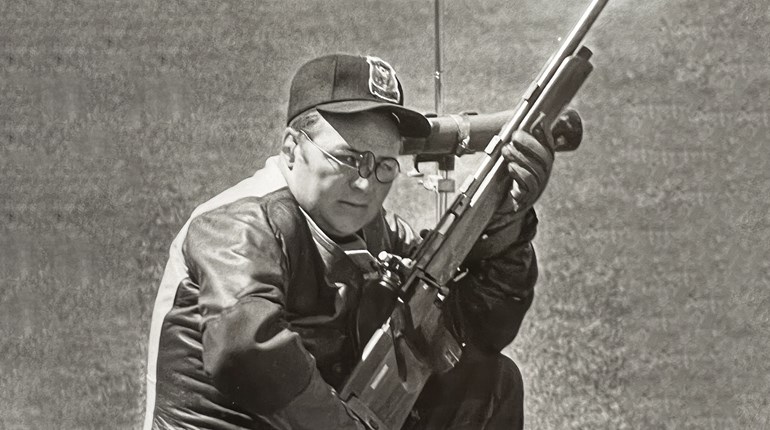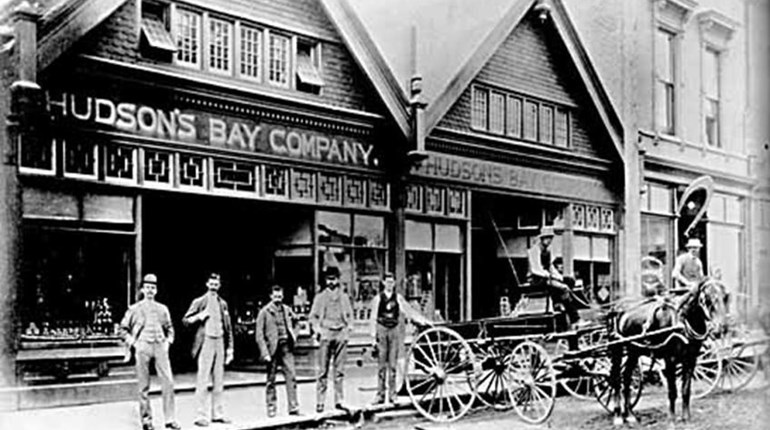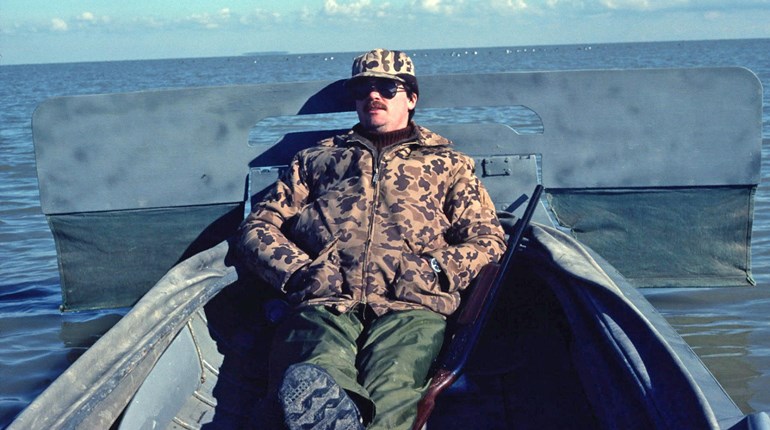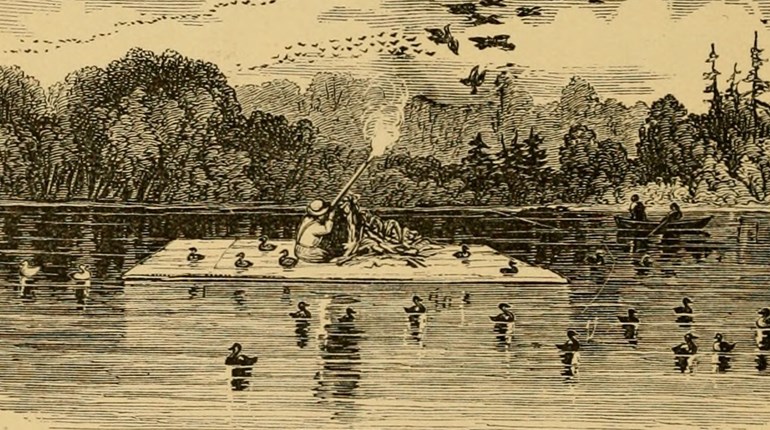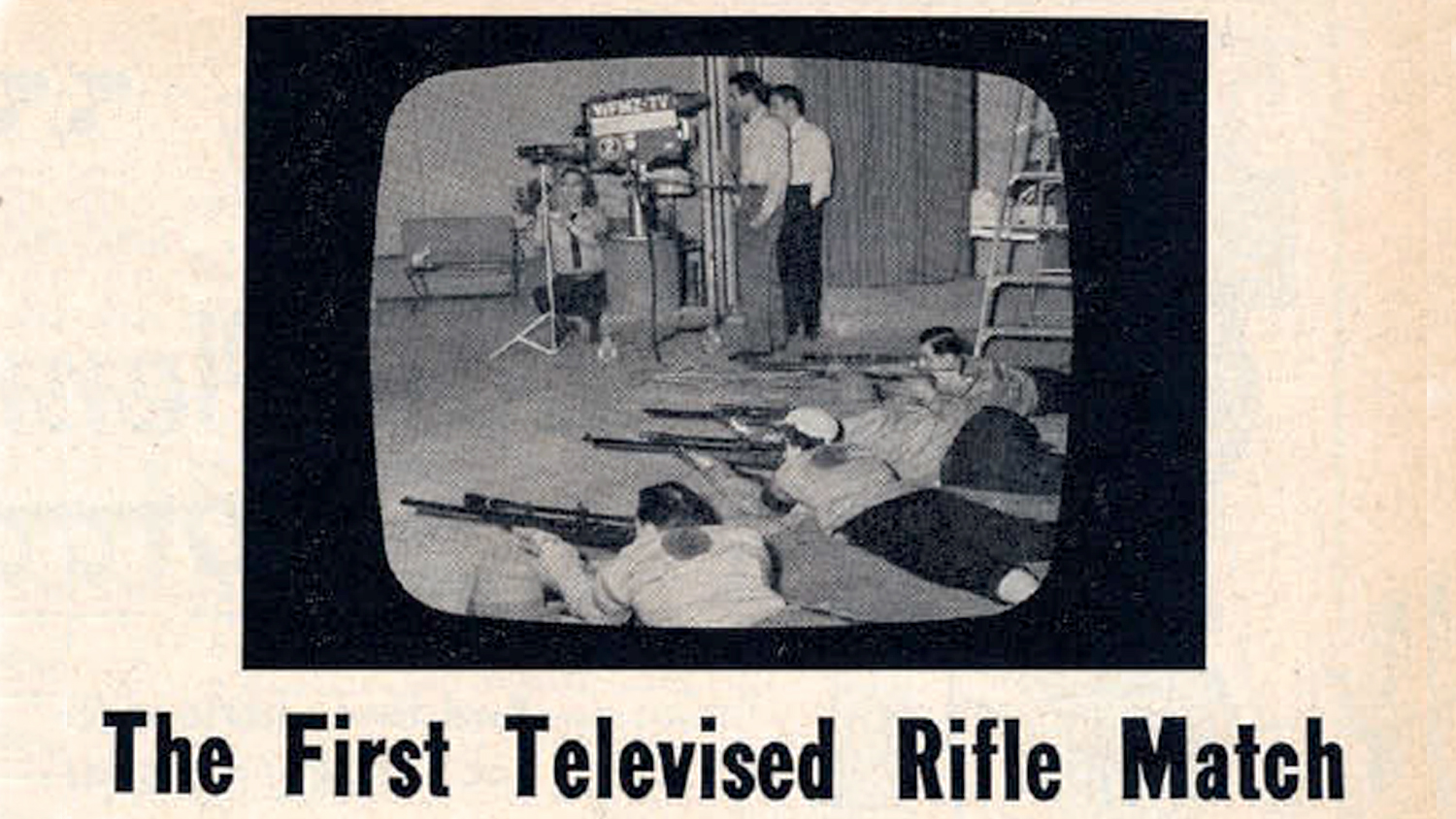
From the April 1955 issue of American Rifleman, an article by Don Mohr on the first televised rifle match.
Television program ideas often develop from unusual occurrences. What we believe to be the first televised rifle match had just such a beginning.
The final construction phase of Allentown, Pennsylvania's first television station, WFMZ-TV, was underway and any spare moments that were available from my Film and Arts Director position at the studio were spent in improving my shooting form. This was accomplished with a target range I had constructed in my home. The range involves firing from my editing room, through my dark room, and into a bullet trap located in my den. This area isolated from the rest of my home and with doors locked is perfectly safe; however, the initial reaction of visitors is one of disbelief.
Such was the case when one of our Directors, Don Tuckwood, paid a call. Upon questioning my wife as to who could possibly be hunting so close to a residence, and being informed it was merely her husband firing through the dark room, he was about to leave as quickly as he had arrived. It wasn't long, however, before he became a regular visitor and participant in a number of impromptu matches.
Televise shooting?
One day the question arose, why not place this very thing before the camera? Why not indeed? You can imagine some of the problems involved: the safety factor, the range size, the safe coverage of target, and above all, the audience reaction.
 Our large 60x60-foot studio makes a 45-foot range the most practical, and a lockout system plus close supervision by a number of range officers eliminates the possibility of any tiny holes appearing in equipment. Experimenting with my spotting scope and the TV camera, I found I could place the Bausch & Lomb 20-power spotting scope in front of the TV camera, and from a safe distance pick up the entire target, enabling the viewing audience at home to watch all five shooters place their shots, which is quite interesting to watch—even to a non-shooter.
Our large 60x60-foot studio makes a 45-foot range the most practical, and a lockout system plus close supervision by a number of range officers eliminates the possibility of any tiny holes appearing in equipment. Experimenting with my spotting scope and the TV camera, I found I could place the Bausch & Lomb 20-power spotting scope in front of the TV camera, and from a safe distance pick up the entire target, enabling the viewing audience at home to watch all five shooters place their shots, which is quite interesting to watch—even to a non-shooter.
The Remington flyspeck targets are used with 50 bulls, five-in-a-row, and ten rows. This allows our scope shooters to try their luck on two rows with a total of ten shots.
With the blessings of our Manager, Raymond Kohn, five .22 cal. rifles blaze away on Wednesday nights during our "Seven to Nine Show". This program is planned around 120 minutes of local live entertainment and information. Most anything is presented, from arts to sports to industries to—yes, rifle matches.
Cover other activities with guns
To add interest to this quarter-hour of shooting for those of the audience who may have no desire to watch holes appear in paper (though we've discovered that many non-shooters are fascinated by the matches), interviews are conducted on some phase of shooting—cups and medals won by some of our shooters, law enforcement officers and firearms, gunsmiths, how to load ammunition, antique guns, etc.
The studio area is cleared 15 minutes prior to telecast so the shooters can zero in and, to keep the area safe, the match is presented at the very beginning of the show. Often the letters S-H-O-W of the Seven to Nine Show title are shot out by the five shooters as an opening feature.
The participants experience considerably more tension when firing over television as compared with the normal club match. They are well aware of the many eyes peering at every miss. Such stage fright, however, does not deter them from the usual heated discussion of 'just on the line' shots.
Scoring, by the way, provides a possible 200 with 20 X's, and an X is any shot hitting the flyspeck but not touching the circle. A 10 is any shot hitting the flyspeck but touching the circle. Any shot missing the flyspeck is scored as a miss and down 10 points. This is a fast and easy method of scoring right before the camera which I do immediately following the shoot so as to present the winner for the night.
A tremendous amount of credit goes to the local gun clubs who aided me in laying the ground work for the first match. Nineteen men and one brave woman. Five shooters fired per week with each returning to shoot a second time. A local merchant donated a beautiful trophy to the high scorer and sterling silver tieclips for the three group runners-up.
Matches scheduled regularly now
This match proved so effective that we are not conducting a team match to last 10 weeks. At the close of 10 weeks, if enough interest in shooting has developed, we expect to begin a women's match and a junior division match. The possibilities are endless. What started as another television experiment has blossomed into an interesting smallbore rifle contest, both for the participants and all viewers.
Television stations are always seeking new ideas for programs, particularly programs utilizing local talent and activities. If you approach the program director of your local TV station, perhaps arrangements can be made to program some of the activities of your local rifle and pistol club.
Television program ideas often develop from unusual occurrences. What we believe to be the first televised rifle match had just such a beginning.
The final construction phase of Allentown, Pennsylvania's first television station, WFMZ-TV, was underway and any spare moments that were available from my Film and Arts Director position at the studio were spent in improving my shooting form. This was accomplished with a target range I had constructed in my home. The range involves firing from my editing room, through my dark room, and into a bullet trap located in my den. This area isolated from the rest of my home and with doors locked is perfectly safe; however, the initial reaction of visitors is one of disbelief.
Such was the case when one of our Directors, Don Tuckwood, paid a call. Upon questioning my wife as to who could possibly be hunting so close to a residence, and being informed it was merely her husband firing through the dark room, he was about to leave as quickly as he had arrived. It wasn't long, however, before he became a regular visitor and participant in a number of impromptu matches.
Televise shooting?
One day the question arose, why not place this very thing before the camera? Why not indeed? You can imagine some of the problems involved: the safety factor, the range size, the safe coverage of target, and above all, the audience reaction.

The author placed his Bausch & Lomb 20-power spotting scope in front of the TV camera to capture shots.
The Remington flyspeck targets are used with 50 bulls, five-in-a-row, and ten rows. This allows our scope shooters to try their luck on two rows with a total of ten shots.
With the blessings of our Manager, Raymond Kohn, five .22 cal. rifles blaze away on Wednesday nights during our "Seven to Nine Show". This program is planned around 120 minutes of local live entertainment and information. Most anything is presented, from arts to sports to industries to—yes, rifle matches.
Cover other activities with guns
To add interest to this quarter-hour of shooting for those of the audience who may have no desire to watch holes appear in paper (though we've discovered that many non-shooters are fascinated by the matches), interviews are conducted on some phase of shooting—cups and medals won by some of our shooters, law enforcement officers and firearms, gunsmiths, how to load ammunition, antique guns, etc.
The studio area is cleared 15 minutes prior to telecast so the shooters can zero in and, to keep the area safe, the match is presented at the very beginning of the show. Often the letters S-H-O-W of the Seven to Nine Show title are shot out by the five shooters as an opening feature.
The participants experience considerably more tension when firing over television as compared with the normal club match. They are well aware of the many eyes peering at every miss. Such stage fright, however, does not deter them from the usual heated discussion of 'just on the line' shots.
Scoring, by the way, provides a possible 200 with 20 X's, and an X is any shot hitting the flyspeck but not touching the circle. A 10 is any shot hitting the flyspeck but touching the circle. Any shot missing the flyspeck is scored as a miss and down 10 points. This is a fast and easy method of scoring right before the camera which I do immediately following the shoot so as to present the winner for the night.
A tremendous amount of credit goes to the local gun clubs who aided me in laying the ground work for the first match. Nineteen men and one brave woman. Five shooters fired per week with each returning to shoot a second time. A local merchant donated a beautiful trophy to the high scorer and sterling silver tieclips for the three group runners-up.
Matches scheduled regularly now
This match proved so effective that we are not conducting a team match to last 10 weeks. At the close of 10 weeks, if enough interest in shooting has developed, we expect to begin a women's match and a junior division match. The possibilities are endless. What started as another television experiment has blossomed into an interesting smallbore rifle contest, both for the participants and all viewers.
Television stations are always seeking new ideas for programs, particularly programs utilizing local talent and activities. If you approach the program director of your local TV station, perhaps arrangements can be made to program some of the activities of your local rifle and pistol club.













